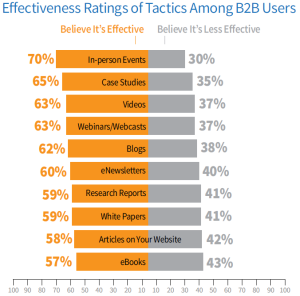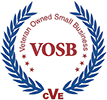More importantly, what do your customers say about it?
One of the most successful B2B brand building tools is the business case study and testimonial because it tells the world who you are and why that is important to them.
Best places to spread your brand
According to Marty Neumeier, author of The Brand Gap, a brand is a person’s gut feeling about a product, service or organization. It’s not what you say it is. It’s what they say it is. The problem is that many organizations face a brand gap because their creative does not match their strategy.
Brands have value worth protecting
Today’s top brands can attribute 50 to 75 percent of their market value to it, according to a recent report by Thomson Reuters and Interbrand. Then, why is so difficult to get it right? In our previous posts and Neumeier’s book, organizations must focus, focus and focus until they can answer these questions:
- Who are you?
- What do you do?
- Why does it matter?
How to get your customers to take on your brand
Getting your customers and vendors to help answer those questions through testimonials and business case studies, will put your branding on track, as well as raise awareness of your content. That is why case studies ranked second highest in effectiveness of B2B content in the B2B Content Marketing: 2014 Benchmarks, Budgets and 2014 Trends–North America. In the same study, best-in-class B2B marketers, however, rated blogs as the most effective tactic (79%), which surpassed how they rated in-person events (76%). Considering well written and relevant blogs raise search engine ratings, so you customers can find and research your organization and offerings, makes sense. All the more reason to have them. They become part of your brand story and helpfulness to readers and future customers. I like to use my blog to clarify perplexing issues to help my clients get a better grasp of them.
Customers seek more from your brand
In order to understand the change in buyer preferences and expectations, I borrowed infographics from Neumeier’s SlideShare presentation. I believe that these are critical elements to get your branding story straight.
| FEATURES | BENEFITS | EXPERIENCE | IDENTIFICATION |
| “What it is” | “What it does” | “What you feel” | “Who you are” |
| 1900 | 1925 | 1950 | 2000 |
Marketing today is about creating tribes – people just like us, demographically and psychographically.
| TRUST = RELIABILITY+ DELIGHT |
Trust comes from meeting and beating customer expectations.
Can you elicit their story to show how you resolved their problem or pain? Case studies can start the conversation with all buyer personas. Pull quotes can serve as nuggets for testimonials or just a tool to digest the essence of the story. Great stories bear repeating in trade journals and reprints provide additional credibility.
Design elements help identify your tribe
Often times when we are approached to help our clients, we notice the inconsistencies between their online, presentation and printed materials. Although each medium has its unique formats their elements should provide a consistent look and feel that we want customers to identify with. As with popular brands, they need to be updated for the times.
Test your website content as you would retail packaging
I liked that Neumeier compared a well-designed package to the successful formula for a website, because hardest-working packages follow a natural reading sequence:
Your website shopper
- Notices the package (Google search for relevant key words used on website and blog)
- Asks “What is it?”
- Wonders “Why should I care?”
- Wants to be persuaded (could I belong to this tribe?)
- Needs proof (business case and testimonials… Yes, I could. Starts the conversation with an inquiry.)
Just as presenting information to match this sequence, a package can sell the product more effectively, so can your website.
In summary, your B2B brand has tremendous value and helps you build your tribe – only if it resonates with your customers. So, starting asking them to be featured in your marketing efforts to create those strong associations and relationships with your organization. After all, you must be as passionate about your customers and your offerings as they are about partnering with you.
Should you need help with your planning or content development to bridge the gap between your brand strategy and design, contact us or find out how in our Marketing Planning and Marketing Communication Workshops.

